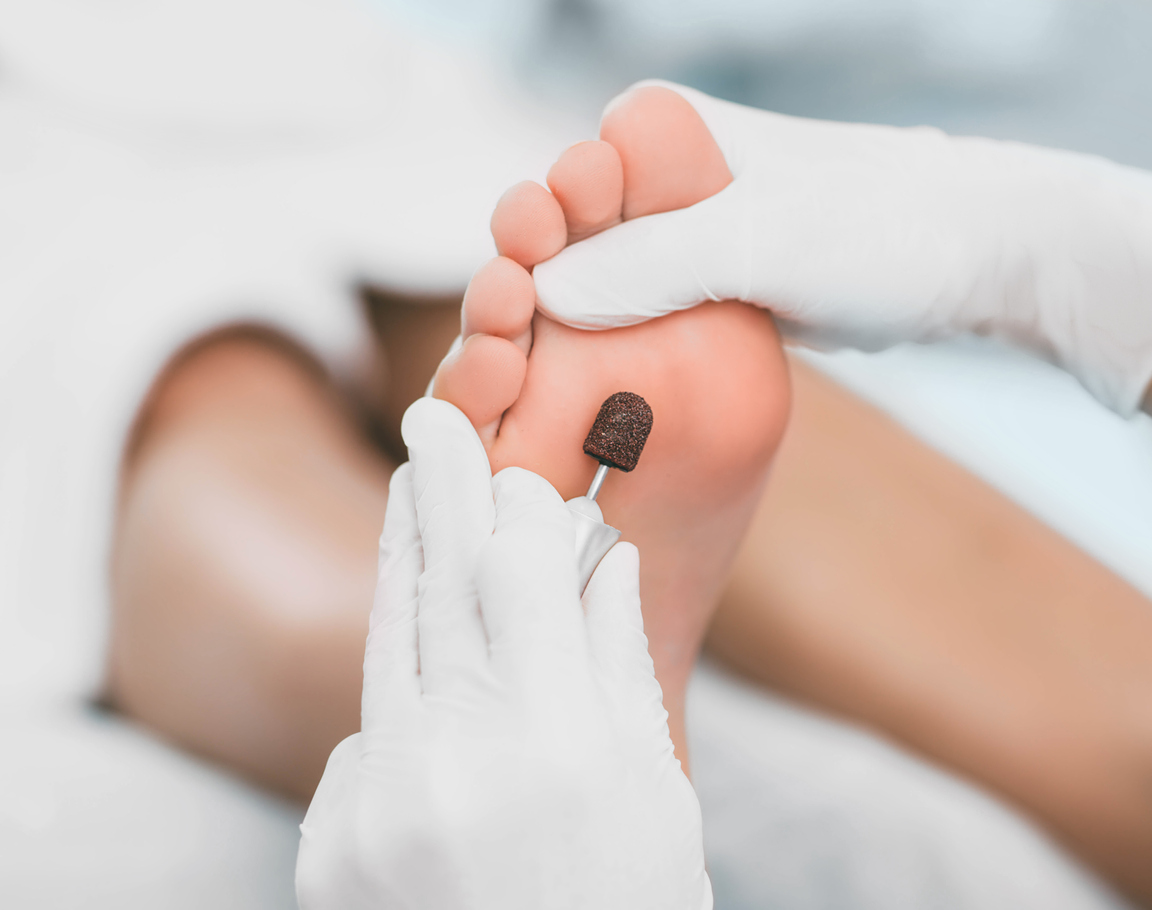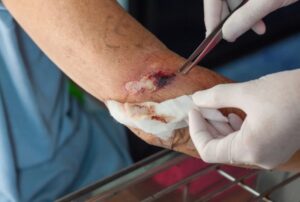Diabetic foot wounds are a significant concern for individuals with diabetes. These wounds, if not managed properly, can escalate into severe complications such as infections, gangrene, or even amputations. Orthopedic treatment for diabetic foot wounds is crucial to address non-healing wounds and prevent further deterioration. In this post, we’ll explore the challenges of non-healing diabetic foot wounds, the role of orthopedic care, and how early intervention can help improve healing and prevent complications.
Why Foot Wounds Don’t Heal in Diabetic Patients
Foot wounds in individuals with diabetes are often difficult to heal due to several factors. One of the key contributors is poor circulation, which limits the flow of oxygen and nutrients necessary for wound healing. Additionally, neuropathy (nerve damage caused by high blood sugar levels) can reduce sensation in the feet, making it harder to detect injuries early on.
Increased blood sugar levels further hinder tissue repair by impairing the function of immune cells that fight infection. Combined, these factors can lead to chronic foot wounds that are slow to heal and prone to complications. Therefore, early intervention and a comprehensive treatment approach are essential to manage diabetic foot wounds effectively.
The Role of Orthopedic Care in Treating Non-Healing Foot Wounds
Orthopedic intervention plays a vital role in managing non-healing foot wounds in diabetic patients. Orthopedic care focuses on reducing pressure on the affected areas, improving circulation, and using advanced wound care techniques to promote healing. Specialized treatment for diabetic foot wounds involves a combination of orthopedic assessment, customized orthotics, and advanced dressings that facilitate wound healing.
At the heart of orthopedic care is minimizing pressure on the wound site through techniques such as custom footwear and pressure relief devices. These strategies help reduce friction and provide optimal conditions for wound recovery, preventing further injury and aiding in tissue regeneration.
Key Orthopedic Treatment Approaches for Diabetic Foot Wounds
Debridement for Wound Healing
One of the most effective orthopedic treatments for non-healing foot wounds is debridement—a procedure that removes dead or infected tissue from the wound site. This process promotes faster healing by allowing healthy tissue to regenerate. Wound debridement can be done surgically or through advanced enzymatic treatments.
Pressure Relief Techniques
Pressure relief is essential for diabetic patients, as constant pressure on a wound can prevent healing. Orthopedic Treatment for Foot Wounds that Won’t Heal in Diabetes includes the use of special footwear, offloading devices, and custom diabetic shoes that relieve pressure from the foot, allowing the wound to heal properly. These devices help redistribute weight evenly and prevent further damage to the foot.
Moisture Management and Wound Dressings
Proper moisture management is another critical element in diabetic foot care. Orthopedic dressings are designed to create a moist environment that promotes faster healing while protecting the wound from infection. Advanced dressings, such as hydrocolloid or foam dressings, help keep the wound hydrated and speed up the healing process.
Preventing Complications and Improving Healing
Preventing complications such as infection is a crucial aspect of managing diabetic foot wounds. Infection prevention begins with keeping the wound clean, changing dressings regularly, and avoiding the use of harsh chemicals that could irritate the wound site. Additionally, managing blood sugar levels is essential, as high glucose levels can interfere with the body’s ability to heal wounds.
Proper foot care practices can help prevent new injuries from occurring and reduce the risk of future complications. Regular foot checks, good hygiene, and the use of proper footwear are all key to maintaining foot health in diabetics.
Innovative Treatments and Technologies for Foot Wound Healing
Recent advancements in orthopedic technologies have revolutionized the treatment of non-healing diabetic foot wounds. Some of the innovative treatments include:
Negative Pressure Wound Therapy (NPWT)
This advanced treatment uses suction to remove excess fluid from the wound and promote tissue growth. NPWT is highly effective in improving blood flow to the affected area and accelerating the healing process.
Regenerative Medicine
Regenerative treatments like stem cell therapy are being explored for their potential to repair damaged tissues and enhance healing. By using the patient’s own cells, these therapies can promote tissue regeneration and support faster recovery.
Hyperbaric Oxygen Therapy (HBOT)
HBOT involves breathing pure oxygen in a pressurized room or chamber, which increases oxygen supply to the tissues and accelerates the healing process. HBOT is particularly useful for individuals with poor circulation, as it helps deliver oxygen to damaged areas that struggle to heal on their own.
The Role of Personalized Care in Diabetic Foot Wound Management
Each diabetic patient is unique, and therefore, personalized care is essential for effective treatment. A customized treatment plan addresses individual factors such as wound size, circulation, neuropathy, and overall health. Collaboration between orthopedic specialists and the patient’s diabetes care team ensures that every aspect of care is tailored to the patient’s needs.
Ongoing monitoring of the wound and adjusting treatment plans as needed is key to ensuring the best outcomes. Personalized care not only targets the wound itself but also addresses the underlying health issues that may affect healing.
How Tec Orthopedics Can Help You Heal
At Tec Orthopedics, we specialize in the treatment of diabetic foot wounds and offer a range of orthopedic solutions designed to promote healing and prevent complications. Our approach includes customized treatment plans, advanced technologies like NPWT and hyperbaric oxygen therapy, and compassionate care tailored to each patient’s unique needs.
With a focus on improving mobility and quality of life, we are committed to helping you manage and heal your foot wounds, allowing you to return to the activities you love. Contact Tec Orthopedics today to schedule a consultation and take the first step toward restoring your foot health.
Takeaway
Non-healing foot wounds in diabetes can be a serious health concern, but with the right orthopedic treatment and proper care, healing is possible. Early intervention is critical to preventing complications and ensuring a faster recovery. Whether it’s through advanced wound care, pressure relief, or personalized care, taking charge of your foot health is essential to maintaining your independence and well-being.
If you’re struggling with diabetic foot wounds, don’t wait. Seek orthopedic care from professionals who understand the complexities of diabetic foot health. At Tec Orthopedics, we’re here to support you on your journey to healing and improved quality of life.






